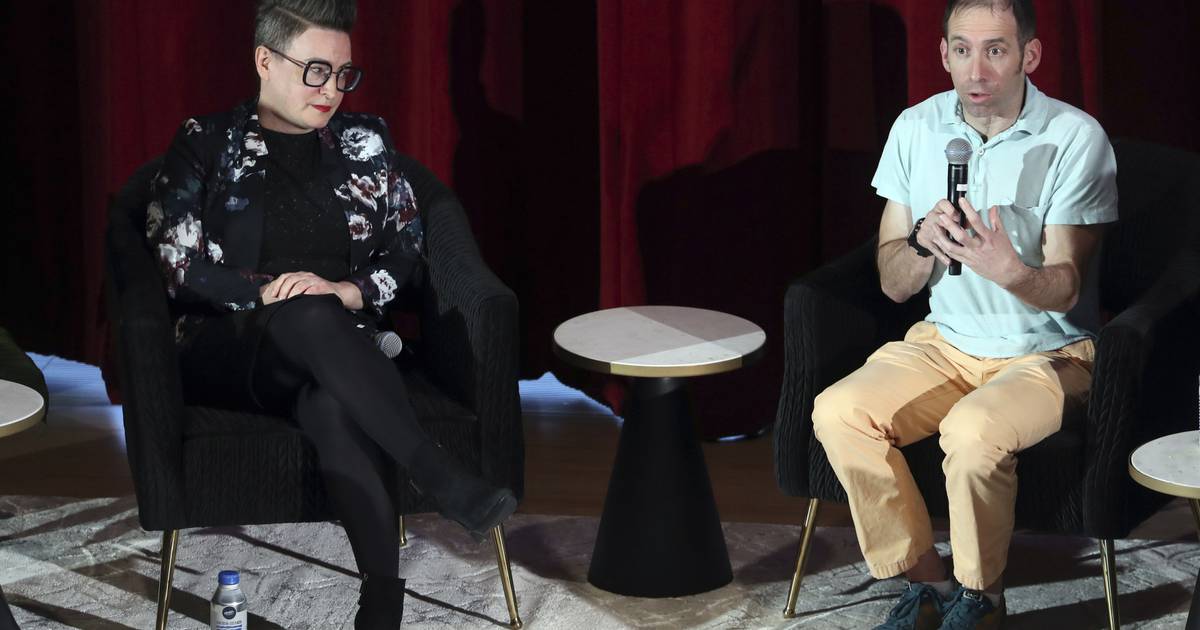From COVID-19 vaccines to the agriculture industry, from mental health wellness to the city of Chicago’s Year of Healing, equity is a term at the forefront on many societal fronts. And for the past two years, the University of Chicago Data Science Institute (DSI) has been focusing on internet equity in a hope to better understand how to fix the digital divide laid bare in state communities during this pandemic.
Researchers from the university’s Crown Family School of Social Work, Policy and Practice and the Department of Computer Science have been collaborating for the past two years gathering newer, focused internet data on Chicago’s 77 neighborhoods under the Internet Equity Initiative. At Monday’s Data Science Institute summit on UChicago’s campus, Nick Feamster, faculty director of research at the Data Science Institute, and Nicole Marwell, associate professor at the Crown Family School of Social Work, Policy and Practice — both principal investigators of the initiative — revealed a 32-point difference between the most connected neighborhoods in the Loop and Near North Side (where more than 94% of households are connected to the internet) compared with Far South Side neighborhoods of Burnside and West Englewood, where fewer than 62% of households are connected.
“We’ve known for a while that federal data on this basically collects paper forms from internet service providers at a pretty coarse granularity, like a census tract level and if one home gets covered, they’re like, ‘OK, it’s fine, ‘ Feamster said. “I knew that it was suspect, but it hit home for me when I moved to Hyde Park almost three years ago. If you look at that map, Hyde Park purportedly gets gigabit internet access and has multiple ISPs serving it. But I had a heck of a time signing up for service on my block. That lit a fire for me. I was like, ‘Wow, if it’s this bad in Hyde Park, in the city of Chicago, it’s got to be even worse elsewhere where we’re not even looking.”
:quality(70)/cloudfront-us-east-1.images.arcpublishing.com/tronc/WWAMJKBRQVHKLKPKFWZM4JERUI.jpg)
The disparities in connectivity between neighborhoods can be seen in DSI’s data portal, which combines public and private data from 20 cities in the nation, including Chicago. UChicago undergraduate students analyzed pre-pandemic information from the US Census, the American Community Survey, the Federal Communications Commission and the portal for a more localized look of internet connectivity in Chicago. From July through August 2021, researchers measured internet performance in a house in Hyde Park and one in South Shore — both households were paying for gigabit internet service from Xfinity (Comcast). The Hyde Park household experienced higher-quality internet than the South Shore household. Portal data also revealed connectivity strongly correlates with income, unemployment and race/ethnicity.
Per the portal data, in portions of Roseland, broadband access is as low as 49%; in an area of Chicago Heights, it’s less than that, and in an area in East Garfield Park, connectivity is lower than 46%. The Loop, Lincoln Park and Beverly neighborhoods show over 90% connectivity. The results emphasize the need for continued, targeted intervention to improve connectivity in sections of the city, and the reason for DSI’s ongoing study. With the $65 billion in federal funding that was authorized in 2021 under the Infrastructure Investment and Jobs Act to help expand broadband, Feamster and Marwell hope the initiative’s work helps Illinois secure its fair share of moneys under the act and aids stakeholders interested in working on solutions to decrease the digital divide.
The initiative is working with local community organizations and residents to help in this effort by collecting different measurements of internet performance in households across Chicago. Volunteers from across Chicago have installed small devices on their routers, which allows researchers to measure internet performance as data travels to and from the household. Researchers are continuing to recruit volunteers to conduct comparisons between neighborhoods. Feamster said the institute’s team welcomes many manners of involvement from community residents — from “slicing and telling the data,” but also to think about solutions.
“The point of collecting the data is to understand the nature of the problem, which can then inform the folks who are working to actually develop solutions to the problem,” Marwell said. “And those can be a lot of different folks: ISPs, utility companies, it could be community groups that are putting together public Wi-Fi, it could be landlords who are trying to add Wi-Fi into their building services, rather than having people connect to an internet service provider on their own.
Marwell said connectivity is more than just an affordability issue. The initiative study is really driving at the quality and reality of people’s lived internet experience on the ground — something more than the one-time captured data of internet speed tests. By measuring more of the lived experience in continuous real time, researchers can measure over time whether something big is going on in a certain neighborhood or whether an area is just having a bad day or hour.
“It may seem like the internet is one solution fits all, but the more we learn about the nature of the problem, we see that what the building is made out of makes a difference, what the trees and other topography are like makes a difference, Marwell said. “What’s possible within the sort of managerial orientation of a multiunit building makes a difference, what community institutions might be available to site an antenna for community Wi-Fi — all those things are part of this process. We can’t really be thinking about solving the internet problem just as give everybody a subsidy to buy their own service.”
“I think to the extent that these efforts are successful at achieving the goal of greater connectivity, that’s going to be really important proof of concept for continuing to roll money in subsequent years through subsequent infrastructure investments at both the federal and the state level, to continue the work and try and reach everybody,” Marwell said.
drockett@chicagotribune.com
